Traveling not only enables people to see cool stuff and taste delicious food around the world. More importantly, it allows us to observe and interact with people from other cultures, bridge understanding, and break through stereotypes. It is a natural way for people to see one another as human beings rather than scary foreigners.
Living in the western world, this aspect of travel usually begins with a condescending assumption about the “other people” in less developed regions. Travel shows on TV are often about discovering how citizens in a war-torn country aren’t all violent, how a jungle tribe can also embrace technology, and how poor people everywhere strive for a better future just like us. It is a natural perspective when we’re from one of the wealthiest countries, but the egocentric narrative can get a bit tiring.
This, at least for me, is where Japan comes to the rescue. Speak to anyone, including those who have never set foot on these islands, and you may hear praises for the supposed flawlessness of the Japanese society. Transit schedules are precise to the millisecond; public spaces are so quiet that you can hear the pin drop; people are orderly to a fault, and over-the-top polite to one another. Like any other stereotype, such characterizations tend to exaggerate a factual phenomenon. Sooner or later you’d start to wonder if the entire country is made of robots.
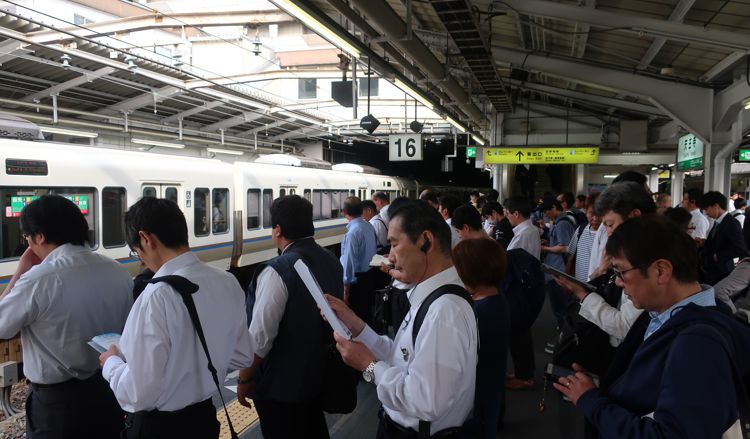
A crowded but orderly train platform
On this trip, we came across several examples counter to the reputation: two delayed trains (plus reports of other delays and accidents), people not queuing properly on the platform, people cutting in line to get on escalators, jaywalking pedestrians, and a family with young children being obnoxiously loud on a train. These incidents put a smile on my face the same way litter in Singapore does. They weren’t significant enough to take away from the country’s overall image, but they were there to remind us that there were always exceptions to the rule. Because we are all human, after all.
Himeji Castle 姬路城
Himeji is an hour of train ride west of Osaka, and it’s famous for having one of the most beautiful and best preserved castles in Japan. We had hoped to check it out eight years ago, but it was under major renovation then and the exterior was entirely covered up. We saw Hikone Castle instead, and it was pretty cool. Still, Himeji Castle remained on our bucket list, and we were glad to check it off this time.
The two castles seemed similar in architecture and defense mechanism. Tourist protocols, such as having to remove shoes and carry around in a plastic bag, were also identical. Having some experience this time around, we were better able to enjoy certain details. It also helped that Himeji Castle was more grand and more elegant than what we saw last time.
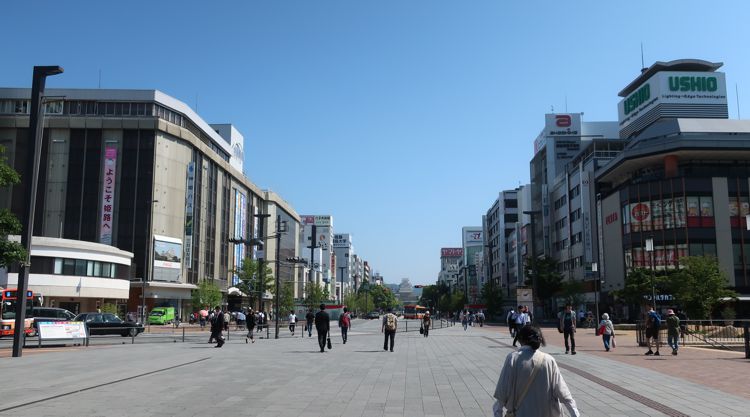
The castle was easily visible a mile away from the Himeji train station
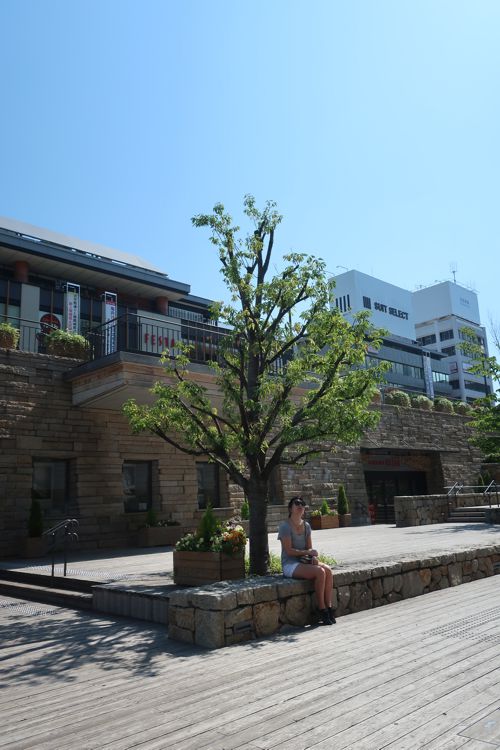
Nice public space right outside the train station, where we had breakfast
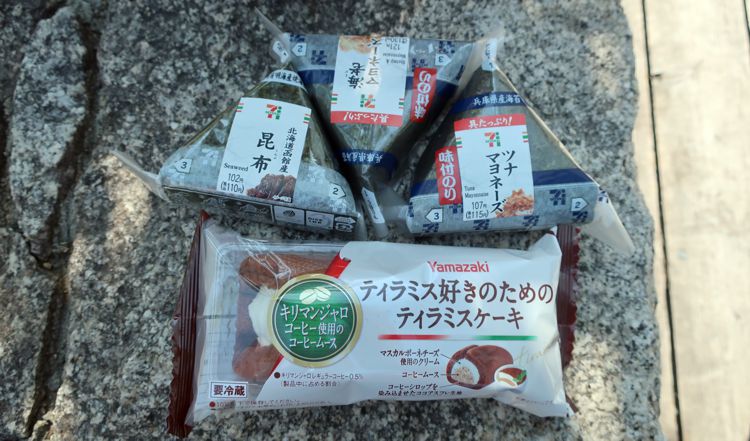
7-Eleven breakfast! A bunch of rice balls and a spongy cake that I thought was a giant chocolate eclair
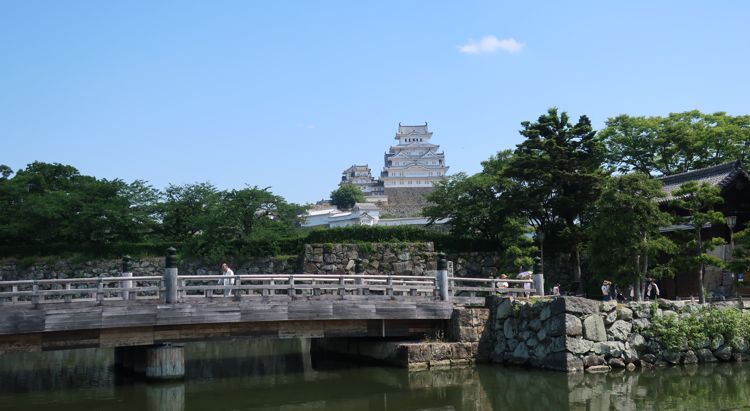
Himeji Castle from the main entrance

A zoo could be found on the castle grounds.
Online reviews said that it was a sad zoo, and walking by it confirmed that it was no place for happy animals
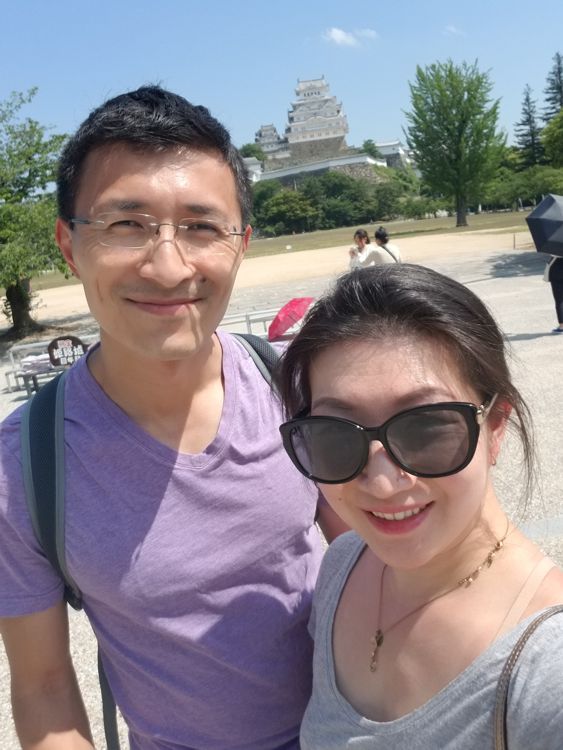
Selfie in front of Himeji Castle
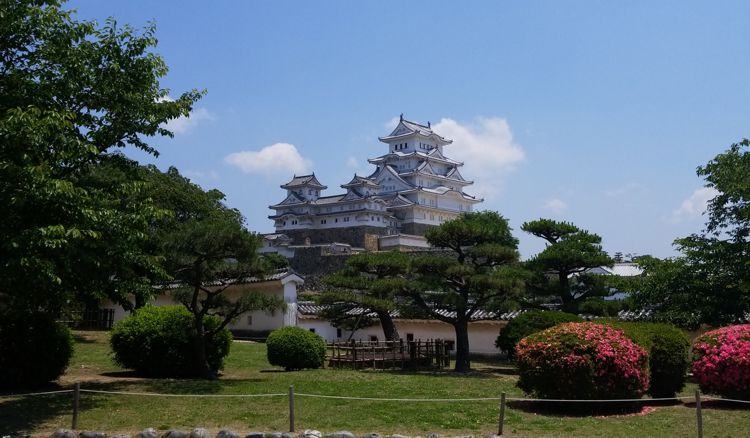
Surely impressive
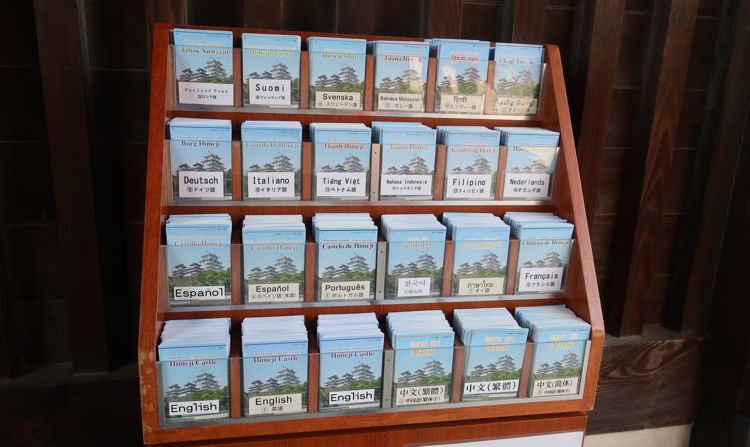
We didn’t see that many foreigners during our visit, but these pamphlets were proof that people come here from all over the world
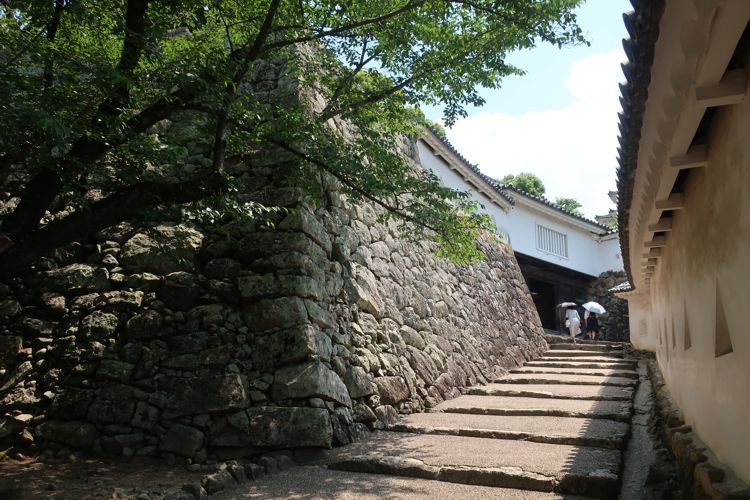
Spiral paths
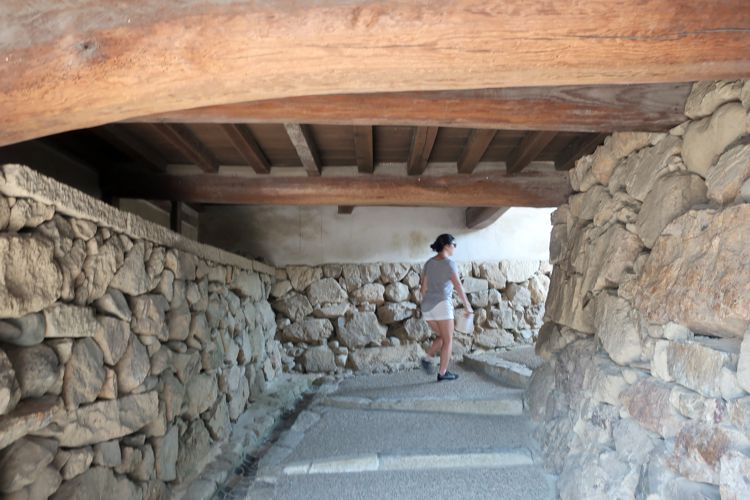
To reach the main keep we had to walk directly under it
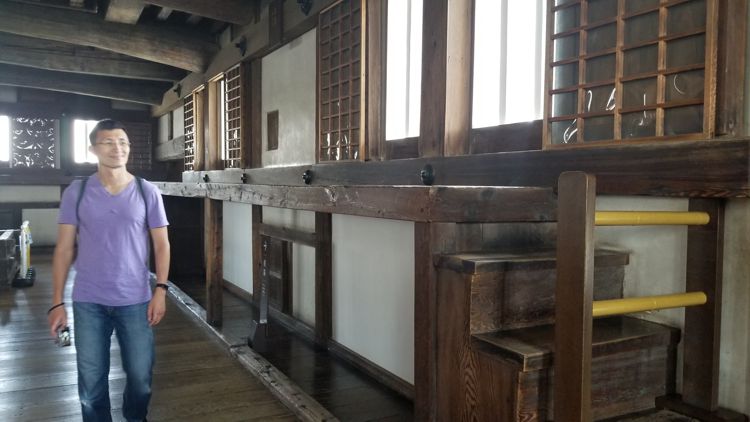
Inside the main keep!
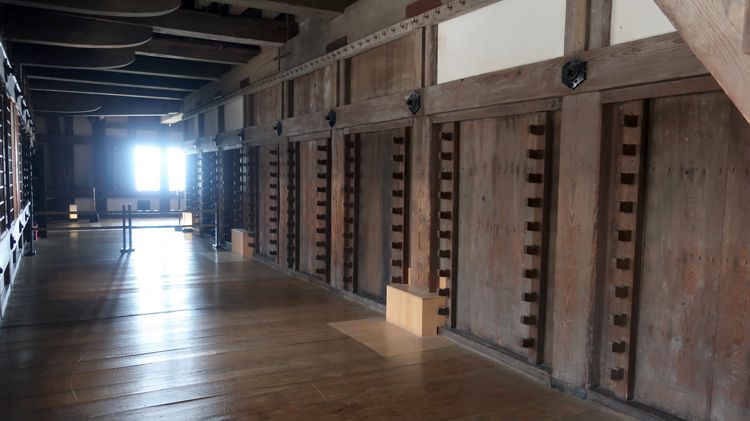
Weapon racks. Lots and lots of them on every floor. I wish they’d have kept a few weapons on display
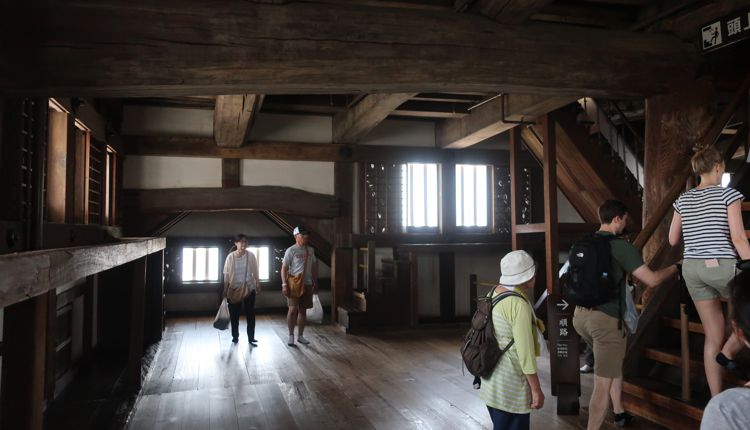
Stairs after stairs led us to the top of the 7-story structure
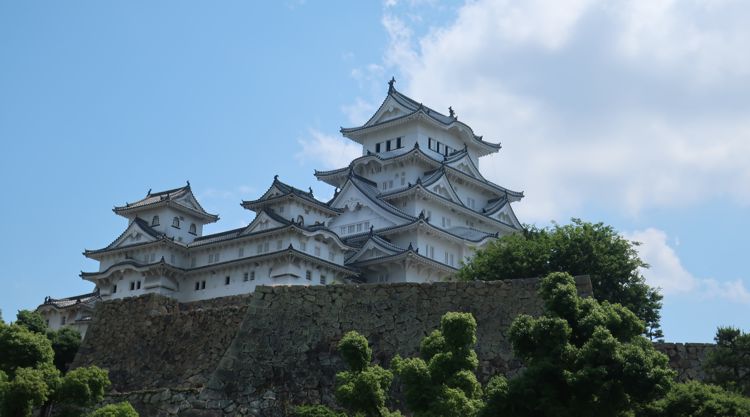
We couldn’t get tired of this beautiful castle
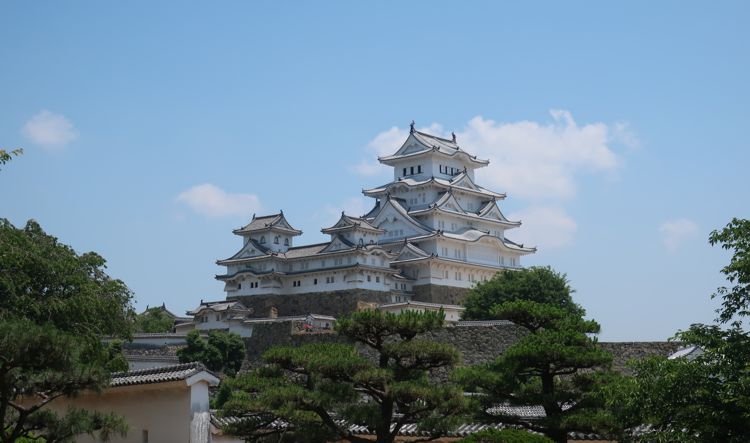
One more…
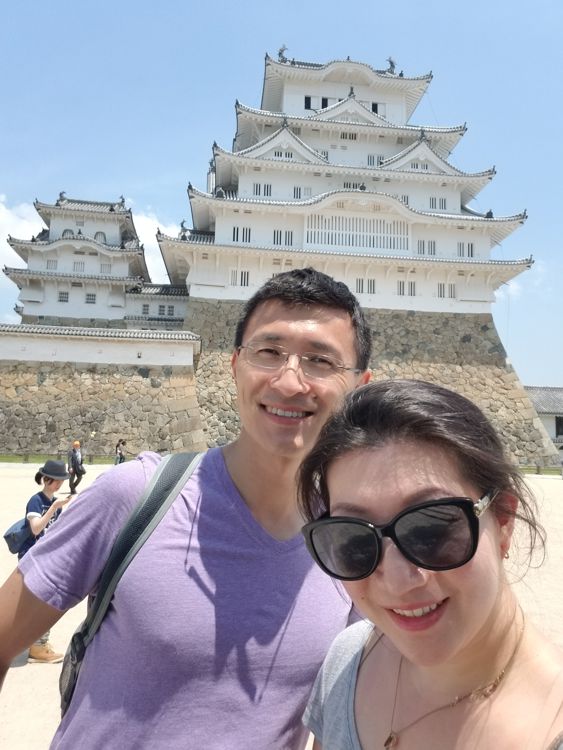
Another selfie

The long hallway inside the exterior wall
Osaka Castle 大阪城
Later on in the same day, we visited Osaka’s castle. Unlike its more popular counterpart in Himeji, it had actually been through war and taken serious damage. Senhime 千姬, the princess that Himeji romanticizes to bolster tourism, lived here before her grandpa besieged it, killed her adolescent husband, and awarded both her and the Himeji Castle to the descendants of his best samurai. History is awesome, because you get to read about all these messed up people!
Plenty of people recommend against going inside the Osaka Castle – after it was heavily damaged by air raids during WW2 (the Japanese military used it as an armory), it was rebuilt into a concrete structure and turned into a museum. We weren’t necessarily against checking out the museum, but having walked enough for the day, we were happy to just admire it from the outside and move on to dinner. While it was smaller in size and less authentic than its Himeji counterpart, both of us found Osaka Castle’s exterior more appealing.
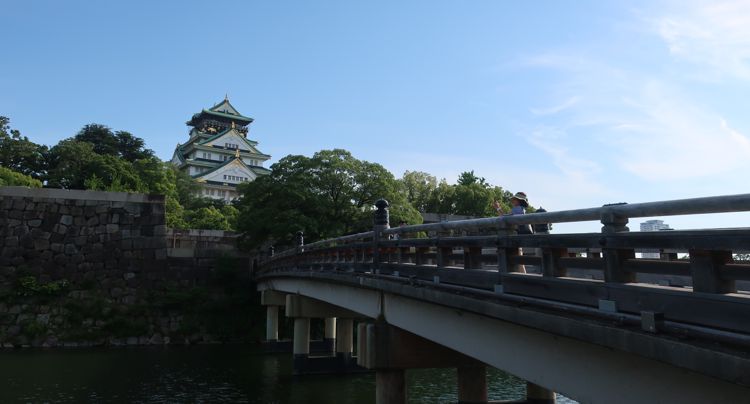
Osaka Castle
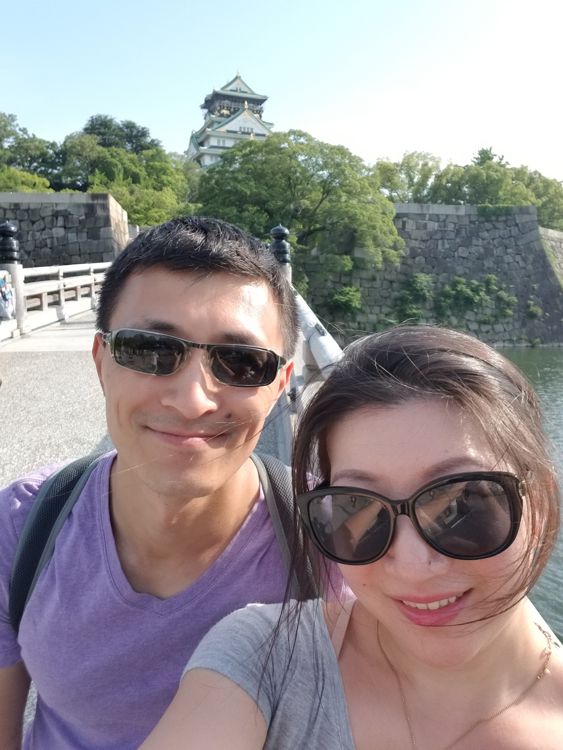
Selfie
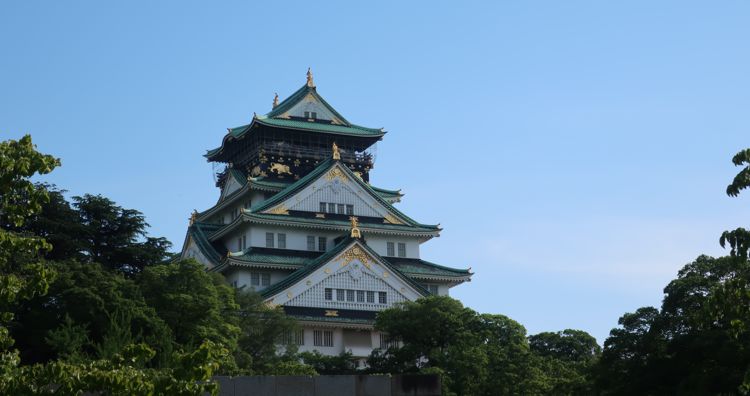
Main keep
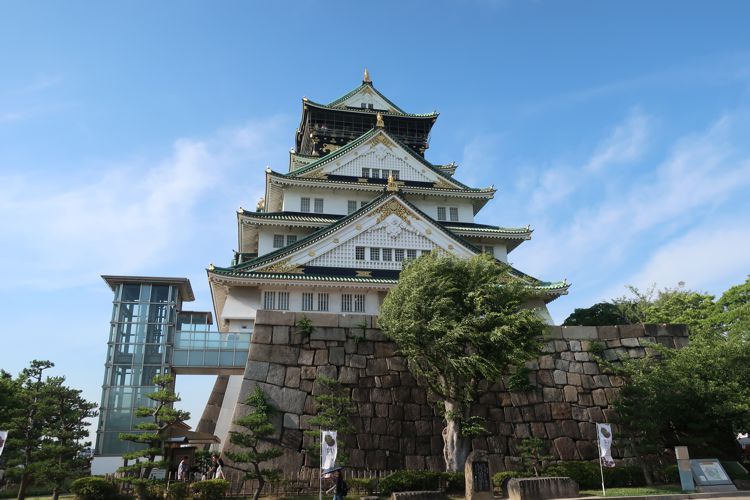
An elevator! Not many castles came with this feature, that I can tell you
Pacific Islands 2018 Index
- Hawaii Four-O
- Surf & Turf Adventures
- Island Eats
- On To Japan
- Osaka via Shinkansen
- Castle Day
- Deer & Whale Shark
- Osaka Urban Hangouts
- Tasty Japan
- Japan Favorites
No Comments